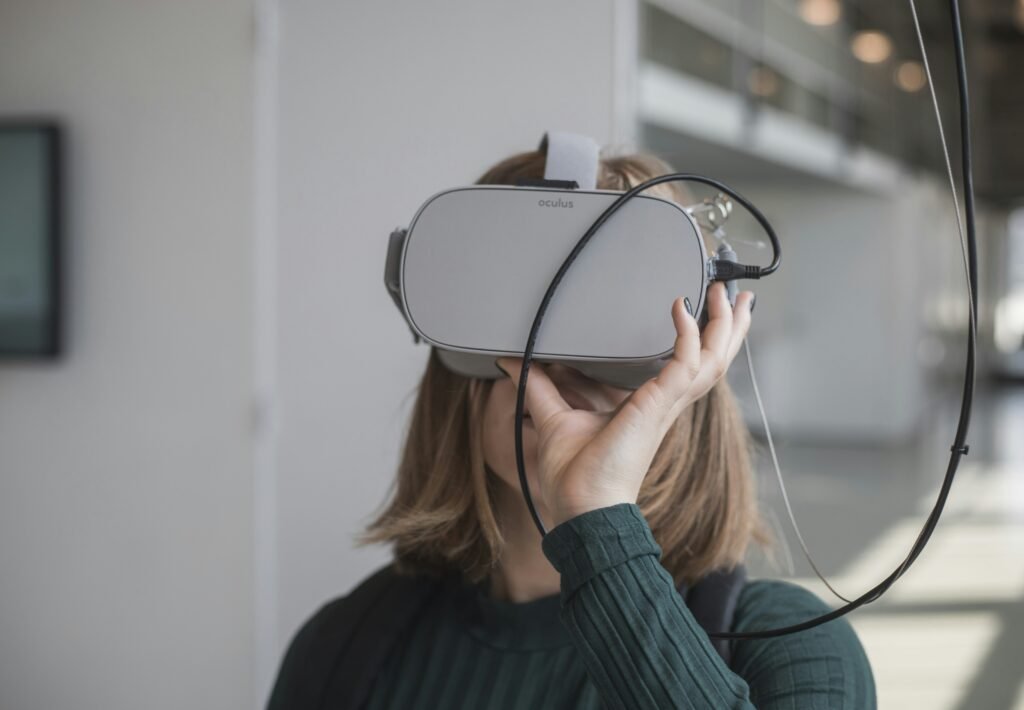Welcome to a fascinating article on how virtual reality is revolutionizing medical education. In today’s fast-paced world of technological advancements, VR is being utilized to enhance the learning experience for medical students. From immersive simulations of surgeries to interactive anatomy lessons, virtual reality is providing a unique and effective way for future doctors to practice and refine their skills. Join us as we explore the boundless possibilities of virtual reality in medical training and its potential to shape the future of healthcare education. Have you ever wondered how virtual reality is revolutionizing the field of medical education? Let’s explore how this innovative technology is transforming the way medical students learn and practice their skills.
Check out our Product Reviews
The Potential of Virtual Reality in Medical Education
Virtual reality (VR) has the power to transport you to different worlds, allowing you to immerse yourself in new experiences like never before. In the field of medical education, VR opens up a world of possibilities for students to learn and practice complex medical procedures in a safe and controlled environment. Imagine being able to perform surgery or diagnose patients without any risk involved. This is the promise that VR holds for medical training.
Benefits of Using Virtual Reality in Medical Education
Using VR in medical education offers several advantages that traditional methods cannot provide. One of the main benefits is the ability to simulate realistic medical scenarios that closely mimic actual clinical situations. This hands-on approach allows students to develop their skills in a risk-free environment, making mistakes and learning from them without any consequences.
Another advantage of VR in medical training is the ability to personalize the learning experience for each student. With VR simulations, students can practice at their own pace, repeating procedures as many times as needed to perfect their skills. This individualized approach helps students build confidence and mastery in performing complex medical procedures.
Additionally, VR enables students to learn in a highly engaging and interactive way. By immersing themselves in VR simulations, students can better understand complex medical concepts and develop a deeper appreciation for the human anatomy. This interactive learning experience makes studying medicine more enjoyable and effective.
Applications of Virtual Reality in Medical Education
The applications of virtual reality in medical education are vast and varied, spanning across different areas of medical training. Let’s explore some of the key ways in which VR is being used to enhance medical education.
Surgical Training
One of the most promising applications of VR in medical education is surgical training. VR simulations allow students to practice surgical procedures in a realistic 3D environment, providing a level of detail and immersion that traditional methods cannot match. This hands-on experience helps students develop surgical skills and techniques, preparing them for real-life operating room scenarios.
Anatomy Education
Another important application of VR in medical education is anatomy education. By using VR simulations, students can explore the human body in great detail, visualizing different structures and systems in a three-dimensional space. This immersive experience helps students better understand the complexities of the human anatomy, improving their knowledge and retention of key medical concepts.
Patient Diagnosis and Treatment
VR can also be used to train students in patient diagnosis and treatment. By simulating different clinical scenarios, students can practice assessing symptoms, making accurate diagnoses, and developing treatment plans for virtual patients. This hands-on experience helps students hone their clinical skills and decision-making abilities, preparing them for real-world patient interactions.
Medical Emergency Training
In emergency medicine, quick thinking and decisive action are essential skills. VR simulations can replicate high-pressure medical scenarios, such as cardiac arrests or trauma cases, allowing students to practice their emergency response skills in a safe and controlled environment. This realistic training helps students develop the confidence and expertise needed to handle medical emergencies effectively.

This image is property of images.unsplash.com.
Check out our Product Reviews
Challenges and Limitations of Virtual Reality in Medical Education
While virtual reality has the potential to revolutionize medical education, there are also challenges and limitations that need to be addressed. It is important to be aware of these obstacles in order to ensure the effective implementation of VR in medical training.
Cost and Accessibility
One of the main challenges of using VR in medical education is the cost of acquiring and implementing the technology. VR hardware and software can be expensive, making it difficult for some educational institutions to afford. Additionally, the maintenance and ongoing support of VR systems can add to the overall cost of using this technology in medical training. Ensuring the accessibility of VR systems for all students is crucial for the widespread adoption of this technology.
Technical Issues and Complexity
Another challenge of using VR in medical education is the technical complexity involved in creating and maintaining VR simulations. Developing high-quality VR content requires specialized skills and expertise, which may not be readily available in all educational settings. Additionally, VR systems can be prone to technical issues, such as lagging or glitches, that can disrupt the learning experience for students. Addressing these technical challenges is essential to ensure the smooth operation of VR systems in medical training.
Integration with Curriculum
Integrating VR into the existing medical curriculum can be a challenging task for educators. Finding the right balance between traditional teaching methods and VR simulations requires careful planning and coordination. Educators must ensure that VR experiences align with the learning objectives and competencies of the curriculum, enhancing the overall educational experience for students. Effective integration of VR into the curriculum is key to maximizing the benefits of this technology in medical education.
Future Trends in Virtual Reality and Medical Education
Despite the challenges and limitations of using VR in medical education, the future of this technology looks promising. As VR technology continues to advance and become more affordable, the possibilities for enhancing medical training are endless. Let’s explore some of the future trends in virtual reality and medical education.
Personalized Learning Experiences
One of the emerging trends in virtual reality and medical education is the emphasis on personalized learning experiences. By leveraging VR technology, educators can tailor educational content to meet the individual needs and learning styles of each student. This personalized approach allows students to progress at their own pace and focus on areas where they need the most support. As VR systems become more sophisticated, the potential for personalized learning experiences in medical education will continue to grow.
Collaborative Learning Environments
Another future trend in virtual reality and medical education is the development of collaborative learning environments. VR simulations enable students to work together in virtual teams, practicing teamwork and communication skills in realistic medical scenarios. By fostering collaboration among students, VR technology can help improve the overall learning experience and prepare students for future healthcare settings where teamwork is essential. Building collaborative learning environments in VR is a promising direction for enhancing medical education.
Remote Learning and Telemedicine
With the rise of telemedicine and remote learning, virtual reality has the potential to play a significant role in connecting students with healthcare professionals and patients around the world. VR simulations can be used to facilitate remote medical training and consultations, allowing students to learn from experts and gain practical experience without geographical limitations. This innovative approach to medical education has the power to bridge the gap between theory and practice, preparing students for a globalized healthcare landscape.

This image is property of images.unsplash.com.
Conclusion
In conclusion, virtual reality is transforming the field of medical education in ways that were once unimaginable. By providing realistic simulations, personalized learning experiences, and innovative training opportunities, VR has the potential to enhance the skills and competencies of future healthcare professionals. While challenges and limitations exist, the future of virtual reality and medical education looks bright. Embracing this technology and exploring its possibilities can help shape the future of medical training for generations to come. So, are you ready to step into the virtual world of medical education? The possibilities are endless.
Check out our Product Reviews